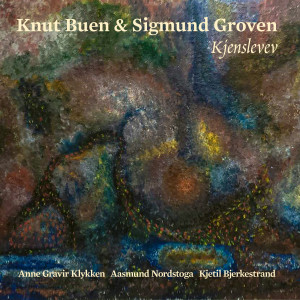 I’m a big fan of modern Norwegian folk music and jazz, but I’m not very familiar with strictly traditional Norwegian folk music. On the basis of this generous album of modern Norwegian folk songs done in the traditional style, I’d say it’s quite enjoyable in measured doses but not something I’d want to make my main focus. I could say the same of any number of traditional folk music styles including English, Irish, and even American. I appreciate their deep roots but much prefer to listen (and dance!) to modern folk or folk rock.
I’m a big fan of modern Norwegian folk music and jazz, but I’m not very familiar with strictly traditional Norwegian folk music. On the basis of this generous album of modern Norwegian folk songs done in the traditional style, I’d say it’s quite enjoyable in measured doses but not something I’d want to make my main focus. I could say the same of any number of traditional folk music styles including English, Irish, and even American. I appreciate their deep roots but much prefer to listen (and dance!) to modern folk or folk rock.
That said, one has to be thankful for musicians like Knut Buen and Sigmund Groven, and the singers who appear on this record with them, for helping to carry forward the traditional styles. It looks like in Norway as in, say, Ireland, there’s folk music and there’s folk dance music, and in a traditional setting the two just aren’t mixed.
Knut Buen is a preeminent player of the Hardanger fiddle in the traditional style, as well as a composer and lyricist. He and Sigmund Groven – best known as Norway’s leading classical harmonica player – have been making music together for many years, but their first recording was 2020’s The Sound of Telemark, consisting of traditional and new tunes by Buen. I don’t know how common the combination of Hardangfele and harmonica are, but they sound quite nice in proximity to each other as we get here. They’ve followed up that successful release with Kjenslevev, 22 tracks of poems by Buen, with melodies by Groven and Buen himself. Singing the songs are Aasmund Nordstoga and Anne Gravir Klykken, and on several they’re also accompanied by Kjetil Bjerkestrand on synthesizer. On a couple of tracks Buen recites his poetry either solo or with minimal backing. Both Nordstoga and Klykken have lovely voices, whether alternating verses or in occasional instances of harmony.
The lyrics and poetry are mostly meditations of a very Nordic sort, drawn from Buen’s life experiences. As he says in the liner notes, ‘“Life and destiny are formed by the interplay of luck, joy, sorrow and leave-taking. Even behind the bright side of life a sense of sadness is lurking. But, on the other hand, even the darkest days of hardship can offer a glimpse of the sun. We live between the light and the shadows.”
I’ve spent some time comparing this album with one of my favorite Nordic folk releases of recent years, Morgonrode’s Du Milde Verden. The latter is modern folk group that plays traditional songs and traditional-style songs in an “alternative” way, incorporating more instruments, percussion, etc., and the vocals are delivered in a less polished style. At first I was put off by the relative lack of variety in the tempos and arrangements on Buen & Groven’s Kjenslevev, and it’s true that I tend to prefer modern music like Morgonrode’s. But the nearly continual stately pace and grave nature of Buen & Groven’s music is a feature, not a bug, chosen by musicians whose aim is to preserve and bring forward the old folk traditions.
And all is not strictly trad on Kjenslevev, either. Bjerkestrand’s synthesizer is capable of sounding uncannily like a harmonium, which I think would be the traditional instrument used on a stately ballad like the opening track “Det er i alt du elskar” (It’s everything you love), and that sound appears in a few other songs as well.
The synth’s electronic nature is a little more apparent on the next track “Der sol tok fatt” (Where the sun appeared), and it has a very New Age sound on “Tidsbilete” (A snapshot of time). “Huldren” goes from old-time to New Age, with Buen’s most rustic fiddling style in the opening section and the rest dominated by a very modern electronic keyboard sound. Most of the tracks are quite short, clocking in at one to two minutes, and at a tempo that sounds to me like about 60 to 70 beats per minute. One outlier is “Vanvetvisa,” a slightly faster march complete with snare and bass drums and cheering crowd noises, coupled with lyrics that meditate on the tension between being free and following orders.
The album’s title translates to something like “tapestry of feelings” and the song titles and topics reflect that title, with meditations on “Desire,” the passage of time, powerlessness, faith and doubt, and awe at the displays of Nature. Existing fans of Norwegian folk will find a lot to like here, and I can see Knut Buen and Sigmund Groven making some new fans along the way, among those who take the time to slow down and take it on its own terms.
(Grappa Musikkforlag, 2023)
